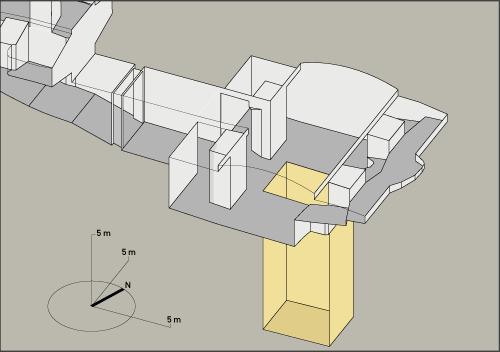Dynasty 18
Our knowledge of the early stages of New Kingdom royal tomb development is hampered by a lack of evidence from early Dynasty 18. KV 39 is thought by some to be the earliest tomb cut in the Valley of the Kings, but it was extensively altered in later times and its lower chambers are now inaccessible because of heavy rains and flooding that filled the tomb in 1994.
It is still uncertain whether Hatshepsut or Thutmes I began KV 20. Burial chamber J2 contained two siliceous sandstone (sedimentary quartzite) sarcophagi, one inscribed for Hatshepsut, the other re-inscribed for Thutmes I. It has been suggested that Thutmes I was responsible for cutting the part of the tomb preceding this chamber and that Hatshepsut then continued the work. Others believe Hatshepsut was solely responsible for the entire tomb.
Thutmes III's tomb (KV 34), and one for his wife Hatshepsut-Meryet-Ra (KV 42) both have a rectangular burial chamber (J) with rounded corners, sometimes called "cartouche-shaped."
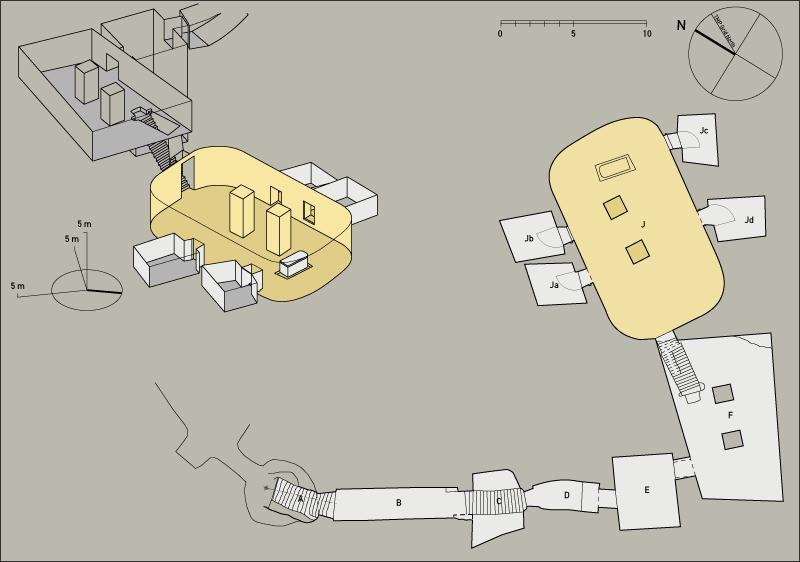
Plan and axonometric of Thutmes III's tomb.
KV 38 also has a similar burial chamber (J). All three tombs have been said to be the work of Thutmes III.
KV 35, belonging to Amenhetep II, is typical of tombs of this dynasty. It has a burial chamber (J) divided into two parts: a pillared area in the front, and a sunken part in the rear where the sarcophagus was placed. A small chamber was cut at the bottom of the Well shaft in well chamber Ea. Four small, Magical brick niches cut into the walls of the burial chamber appear for the first time in this tomb and continue into the reign of Merenptah.
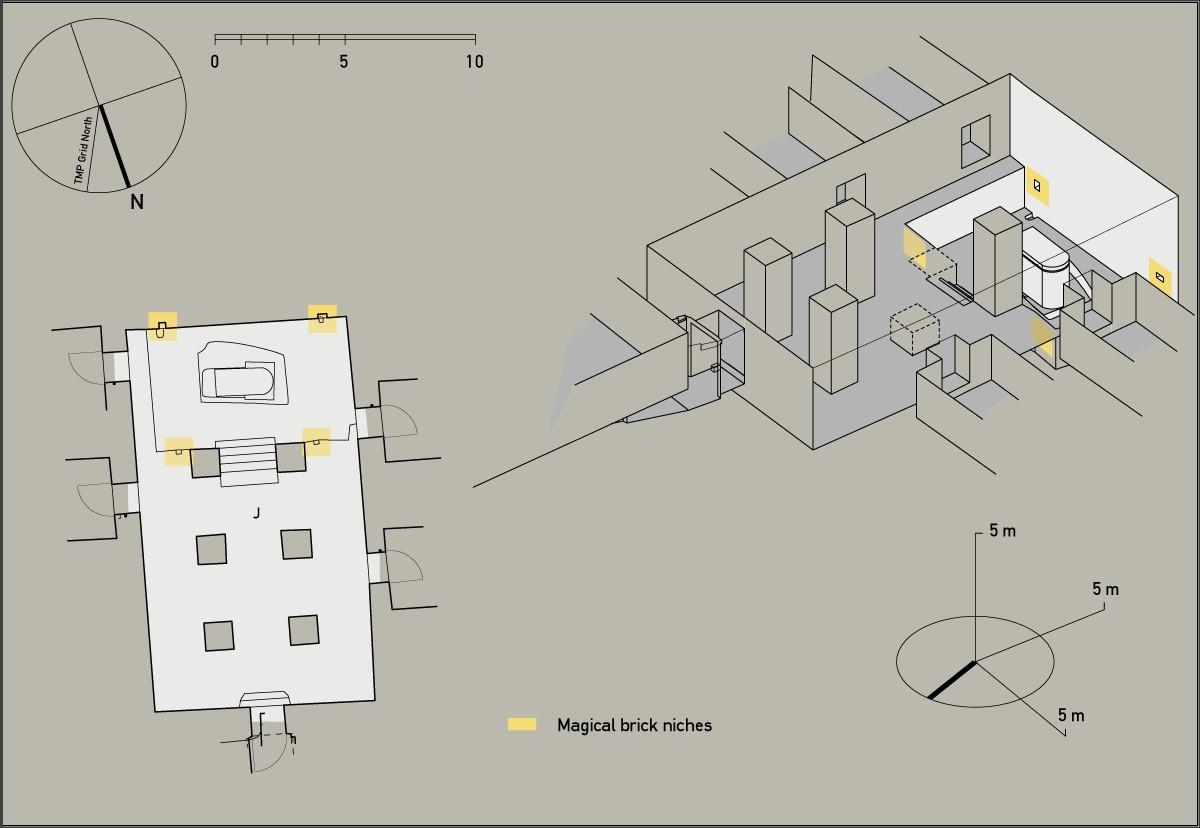
Cut into the floor of burial chamber J of KV 22, built for Amenhetep III, are a canopic chest emplacement and a pair of rectangular depressions for Sarcophagus supports. In addition to royal tombs, a number of private tombs were cut in Dynasty 18 in the Valley of the Kings. These generally have either a vertical shaft leading to the burial chamber (KV 36, KV 45, and KV 48 are among the many examples), or Steps and a corridor (as in KV 12, KV 46, KV 49 and KV 55). The first group has wide chronological distribution; the second group dates from the reign of Amenhetep II to that of Amenhetep III.
Horemheb's tomb (KV 57), the last royal tomb of Dynasty 18, differs from earlier royal tombs by having a straight-line axis rather than a right-angle axis as was common earlier in the dynasty, signaling a shift in orientation that would continue into the next dynasty.
Dynasty 19
KV 16, the first of the Dynasty 19 tombs (intended for Rameses I), was left unfinished and its ultimate axial plan cannot be determined.
But Rameses I's successor, Sety I, built his tomb (KV 17) with a straight axis (albeit with a jog), as did subsequent rulers of Dynasty 19 and 20 (except Rameses II, in KV 7). KV 17 includes several innovations: twice the number of pillars in pillared chamber F, an additional side chamber with pillars (Fa), and a Vaulted ceiling in burial chamber J whose axis is at right angles to the tomb's main axis. The sloping passageway cut through the floor of the burial chamber here is unique.
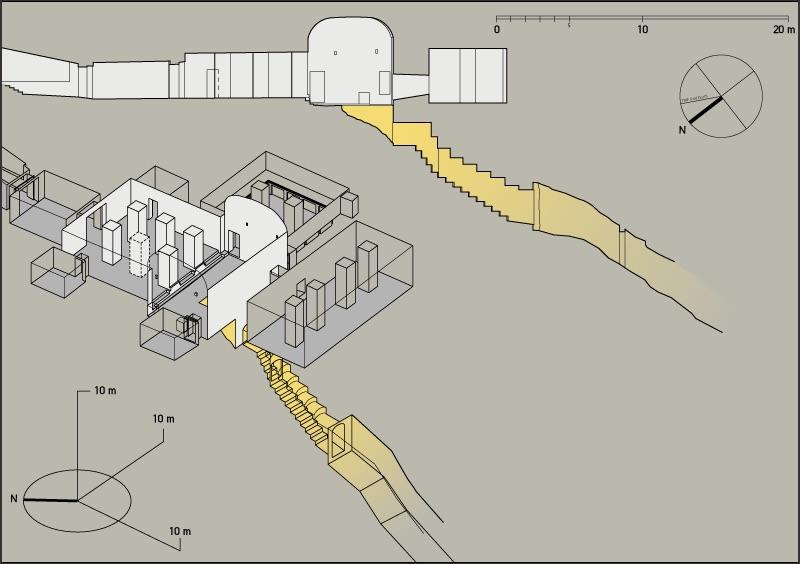
Like Dynasty 18 tombs, KV 7 (cut for Rameses II) contained a right angle turn, but unlike the earlier examples, it occurs immediately before burial chamber J, not at pillared chamber F. KV 7 also included new features: there is a descent in the center of pillared chamber F, flanked by pillars, and a change of orientation in side chamber Fa. The burial chamber was enlarged, a row of four pillars stand on either side of the sarcophagus pit and several side chambers extend off its sides.
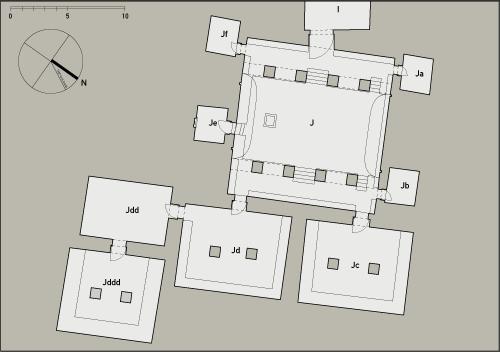
Typical of Dynasty 19 royal tomb design is KV 8 (Merenptah). It shares many features with KV 7, KV 17, and KV 57. But it also has recesses in corridor D and a simplified set of side chambers off burial chamber J. Subsequent Dynasty 19 royal tombs follow the KV 8 model, but in none has the well shaft in chamber E been cut, and their upper corridors slope less steeply.
Dynasty 20
KV 11 was begun by Setnakht, and then taken over by his son Rameses III. It followed the plans of earlier late Dynasty 19 tombs, with gradually sloping corridors. In chamber C, what formerly were trapezoidal recesses are now simply narrow rectangular recesses set high in the walls.
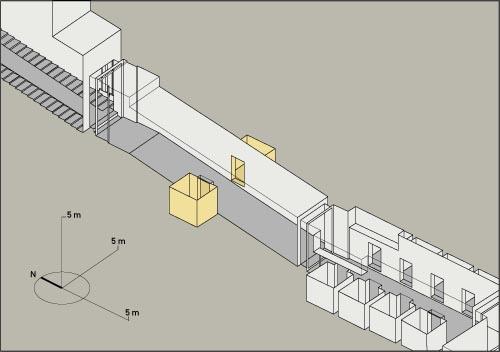
The two pairs of side chambers off of chamber B occur again in only one other tomb, KV 6 (Rameses IX). No other tomb however has the eight side chambers off of corridor C. There are no pillars in KV 11's side chamber Fa, and H has been cut as a chamber, like chamber I, instead of as a corridor. The pilasters that were cut into the walls of entryway A, each topped by the sculpted head of an antelope or a gazelle, have a similar, although unfinished occurrence at the end of KV 6's entryway A. No other Dynasty 20 tombs were completely finished, but all seem to have followed Dynasty 19 models. There is neither a well shaft in chamber E nor the side chamber Fa, although there is some indication of the intention to cut Fa in KV 6.
In KV 2 (Rameses IV), where there would normally have been chamber F, burial chamber J was cut.
The cutting of KV 1 for Rameses VII had apparently progressed only as far as corridor D when the king died. Corridor C was widened and heightened to convert it into a burial chamber, with the addition of a pit in the floor. Two of the last tombs of the dynasty, KV 6 (Rameses IX) and KV 4 (belonging to Rameses XI, but possibly never actually used) are similar to KV 9, but of simpler plan. Most notable in both is the expansion of the pit in the floor of the burial chamber, which fills most of the floor space in KV 6 and becomes a deep shaft in KV 4.
